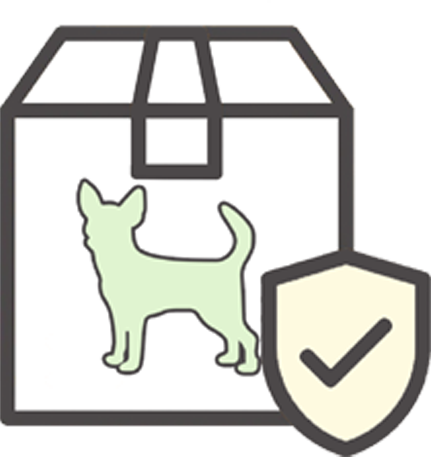Wet Food or Dry Food?
Friday, October 12, 2018 04:23:27 PM America/Los_Angeles
If you are looking to adopt a dog or a puppy, some decisions come with your new addition to the family member. During the potty training period, you will have to choose between different indoor potty for dogs. Apart from that, you will also face the choice of choosing between dry dog food and wet dog food. Because you will be faced with this decision, it would be wise to do some research on the two different types of dog food so you can understand what is best for your new puppy. Below is some information to shed light on the two different types of dog food.
Wet dog food
Wet dog food contains about 70% to 85% water which is then mixed with other dry ingredients. Because of the high water content, your dog will want to pee more often hence if you are house breaking your dog it would be a good idea to get wee wee pads.
Pros
• Easy to chew – Since the food is soggy and it is easier to chew especially for older dogs and dogs with gum issues. It also suits dogs that have a smaller mouth than normal.
• Healthier for growing dogs – wet food is better than dry food during puppyhood. This is the time that the developing dog requires more protein and wet food typically has more protein than dry food.
• For fussy eaters – wet food is more appealing to dogs who are fussy eaters. It is also possible to heat the food to body temperature to make it even more appealing.

Cons
• Plenty of wastage - Once the can of food is opened, the food tends to go bad quickly. And just like human food, once the can is opened you should refrigerate the remainder and ensure it is used in three days otherwise you have to throw it out. This can be expensive especially when you need to buy other accessories for the dog such as an indoor potty.
• Expensive – generally speaking, wet dog food is more expensive that dry food. This is an important factor to put into consideration especially if you have several dogs. You will find that on your shopping list you have to include wet food and wee wee pads more often than you would with dry foods.
• Harder to transition to dry food – Once your dog is used to eating wet food, it will be harder for them to transition to dry food. Therefore, on top of potty training and house breaking, you will also have to struggle to help your dog transition to dry food.
Dry dog food
Dry, wet food also known and kibble is a popular option among most dog owners. There are different manufacturing methods that dry food go thru, among them baking, pelleting and extruding. Dry dog food comes out in different shapes, sizes, and ingredients. Below some pros and cons of dry dog food.
Pros
• Convenience – dry dog food is by far more convenient that wet dog food. For one it is easy to measure the amount you serve using a scoop or a measuring can. This makes it easier to maintain your dog’s weight. Which makes them better for overweight dogs.
• Cost effective – dry food is cost-effective when purchasing in bulk. It also takes longer to go bad which translates to lower waste. This means that your budget allocated for your dog will have less food and more accessories such as wee wee pad and indoor dog potty.
• Dental health benefits – dry food is better for your dog’s teeth than wet food. Because wet food will promote plaque buildup while dry food will cleanse the dog’s teeth as he chews on it. While a dog with healthy teeth has no trouble chewing on the dry feed, dogs with poorly aligned jaws or smaller mouths might have a problem with dry feeds. Dry feeds also help exercise the dog’s jaws and also satisfies its natural chewing instinct.
Cons
• Hard to chew – This is the top disadvantage of dry dog food. While beneficial to some it can be extremely painful to chew especially for dogs with dental issues. If your dog is showing signs of pain when eating or refusing to eat, it would be wise to change their diet to wetter food. They do not need to struggle with both potty training and feeding.
• Less palatable – dry food tends to have less flavor when compared to wet food. It can, therefore, be a problem if you have a picky eater. You have to experiment with different feeds to see which your dog prefers. The good thing is that there are numerous choices of dry dog feeds as there are of the indoor potty for dogs for you to choose from.
• Low fat – dry dog feeds tend to have lower percentages of fat and a higher percentage of carbohydrates. If you have an active dog, they will need higher levels of fat. Hence dry dog food is not enough for them. Dry dog feed have lower water levels meaning your dog will use the doggie lawn less frequently.
• Higher chances of constipation – with dry food, hydration becomes an issue. Because pets do not understand that to stay healthy they need to constantly drink water, it can become an issue, and you find they are constipated regularly.
While both dry food and wet food have their pros and cons, it is important that you put the dog’s health needs before making a decision. You also don’t have to choose just one type of feed. Most dog owners will give their dog dry feeds in the morning to last him the whole day and give them wet food in the evening.

